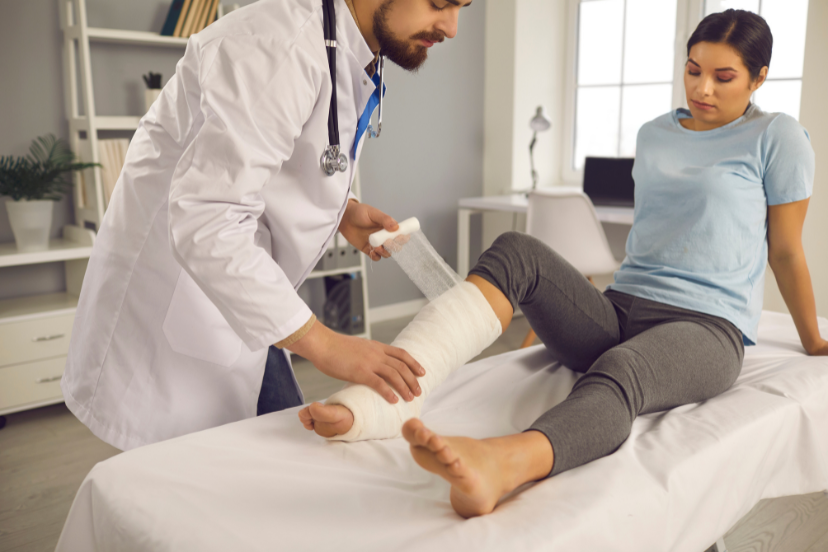What are the Most Common Sites for Fractures in Osteoporosis?
Are you grappling with osteoporosis and wondering, “What are the most common sites for fractures in osteoporosis”? This informative article delves into the specifics of fractures related to osteoporosis. Understanding these sites is crucial for managing and preventing fractures effectively.
Introduction: Cracking the Osteoporosis Code
Osteoporosis, often termed the “silent disease,” weakens bones, making them fragile and more likely to fracture. This condition can have life-altering consequences, and understanding where fractures commonly occur is vital. So, let’s uncover the key question: “What are the most common sites for fractures in osteoporosis”?
What are the Most Common Sites for Fractures in Osteoporosis?
Fractures resulting from osteoporosis tend to occur in specific areas of the body due to weakened bones. Understanding these common sites is critical for early detection and proactive measures.
-
Vertebrae: The Backbone of Fractures
The vertebrae, the bones of your spine, are often susceptible to fractures in osteoporosis. The weakening of these bones can lead to compression fractures, causing pain, posture changes, and even height loss.
-
Hip Fractures: A Major Concern
Hip fractures are a significant concern in osteoporosis. The hips are a common site for fractures, often resulting from a fall or even minor trauma. These fractures can severely impact mobility and quality of life.
-
Wrist Fractures: A Common Occurrence
Osteoporosis can also lead to fractures in the wrist, especially the distal radius. Even a minor fall can result in a fracture due to weakened bones. Wrist fractures can hinder daily activities and may require medical intervention.
-
Femur Fractures: Weight-bearing Challenge
The femur, the thigh bone, is another site where fractures can occur in individuals with osteoporosis. The femur is a weight-bearing bone, making it susceptible to fractures that can have debilitating effects.
-
Pelvis Fractures: Impact on Mobility
The pelvic bones can also be affected by osteoporosis, leading to fractures. These fractures can impact mobility and daily activities, making it vital to address osteoporosis promptly.
Understanding the Impact: What Happens with These Fractures?
Fractures related to osteoporosis can have severe consequences, affecting mobility, independence, and overall well-being. It’s essential to comprehend the potential implications to manage osteoporosis effectively.
- Pain and Discomfort: Fractures in common sites cause significant pain and discomfort, often requiring medication and rehabilitation.
- Mobility Limitations: Fractures can limit mobility, making it challenging to perform routine activities independently.
- Impact on Daily Life: The fractures may disrupt daily life, hindering work, social engagements, and personal care routines.
Preventing Fractures: Taking Proactive Measures
Prevention is crucial in managing osteoporosis and averting fractures. Understanding the potential risk factors and adopting preventive measures can significantly mitigate the likelihood of fractures.
- Adequate Calcium and Vitamin D Intake: Ensure a diet rich in calcium and vitamin D to strengthen bones and reduce the risk of fractures.
- Regular Exercise: Engage in weight-bearing and muscle-strengthening exercises to enhance bone density and reduce fracture risk.
- Medical Check-ups and Monitoring: Regular check-ups and bone density tests can aid in early detection and management of osteoporosis.
FAQs: Addressing Your Concerns
FAQ 1: What are the symptoms of fractures in osteoporosis?
Fractures in osteoporosis often manifest with sudden, severe pain in the affected area, swelling, bruising, and limited mobility. Seeking prompt medical attention is crucial.
FAQ 2: Can fractures in osteoporosis be prevented?
While fractures can’t be completely prevented, adopting a healthy lifestyle, getting adequate nutrients, and regular exercise can significantly reduce the risk.
FAQ 3: Are certain age groups more susceptible to fractures in osteoporosis?
Yes, older individuals, especially post-menopausal women, are at a higher risk due to declining bone density. However, men can also develop osteoporosis and experience fractures.
FAQ 4: What treatments are available for fractures in osteoporosis?
Treatment may involve pain management, physical therapy, and in severe cases, surgical intervention to stabilize the fractures and aid in recovery.
FAQ 5: Can osteoporosis-related fractures lead to long-term complications?
Yes, fractures can lead to long-term complications like chronic pain, reduced mobility, and increased susceptibility to further fractures.
FAQ 6: How can I support a loved one with osteoporosis and fractures?
Offer emotional support, assist with daily activities, encourage adherence to medical advice, and ensure a safe living environment to support their recovery.
In Conclusion: Taking Charge of Osteoporosis
Understanding “What are the most common sites for fractures in osteoporosis” is paramount in managing this condition effectively. Proactive prevention, timely medical attention, and a supportive environment can make a significant difference in the lives of individuals dealing with osteoporosis. Stay informed, stay active, and prioritize bone health for a fulfilling life.




